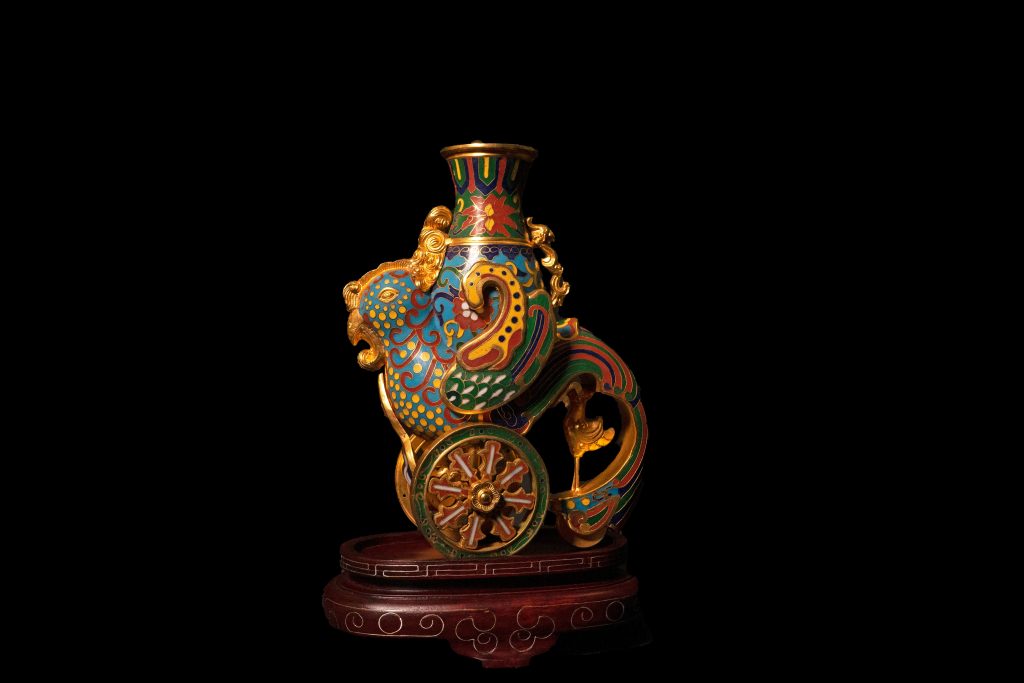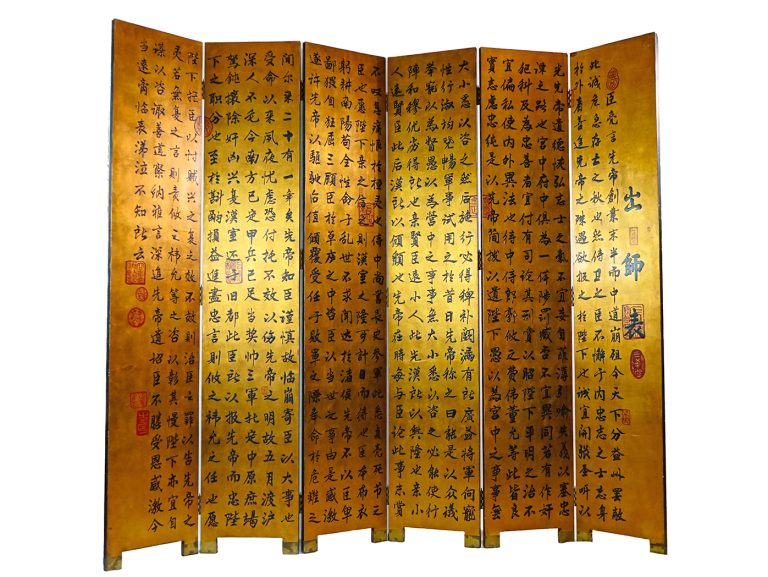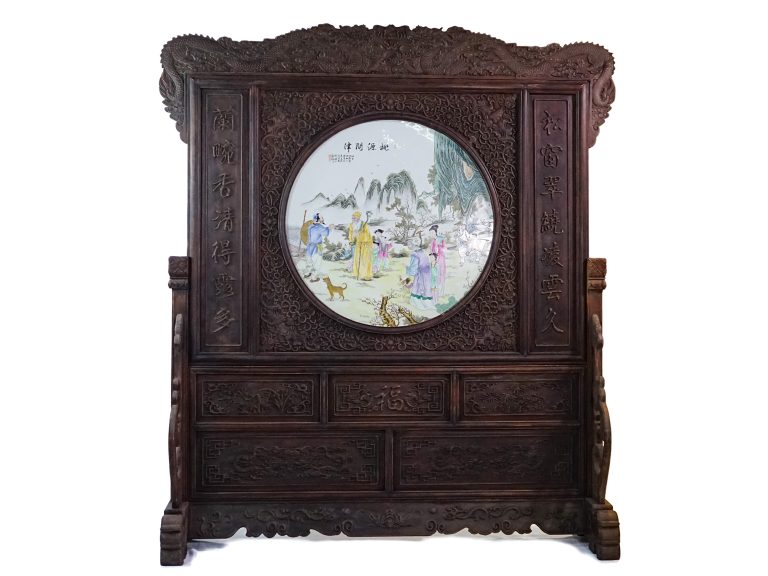

Between the two wheels at the bottom of the Tianji Zun, there is a rectangular copper gold-plated plate inlaid, and the gold plate is inscribed with the mark of “Qianlong Year”, which confirms that it is a product of the Qing Dynasty. During the Qianlong period, the cloisonne craftsmanship was vigorously promoted by the emperor. The shape of the works broke through the traditional bottles, pots, bowls, and plates of the previous dynasty, and then expanded to refrigerators, hand warmers, snuff bottles, mirrors and other daily utensils. Among them, various practical and display utensils displayed in the image of animals. It is the representative work of this period.
“Zun” is an ancient wine ceremony. Because the Emperor Qianlong was a good ancient addict, most of the Cloisonne at that time was made of a formula made by the bronze wares. The shape of the Tianshizun is composed of three most of it. The hecillars stand up first, and the long and re-rolled tails extend inward. Then, Tianji breasts have a large color cloud, connected to the hollow two-wheeled wheels under the feet, and there is an ellipse of the ears on the back of the back. Essence
The whole body of Tianji is filled with enamel glaze with feather patterns, while the surface of the Chi-ear statue and the double wheel are covered with tangled lotus patterns. The pheasant is a legendary bird in ancient times. It leads all the chickens in the world to announce the dawn every time the sun rises.

 Enquire
Enquire



